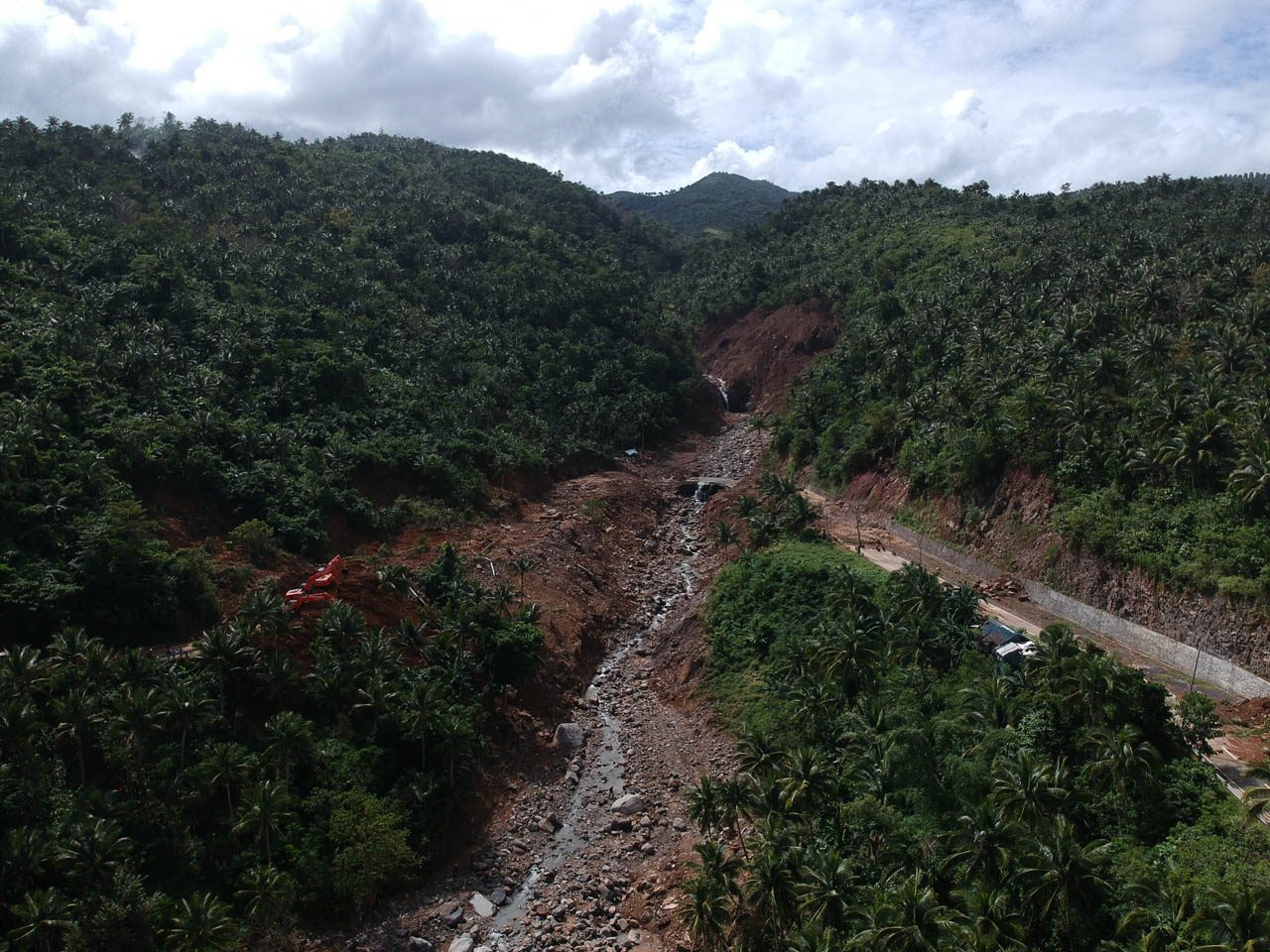SUMMARY
This is AI generated summarization, which may have errors. For context, always refer to the full article.

ALBAY, Philippines – A retired engineer and resident of one of the towns hit hard by Tropical Depression Usman called on local officials to temporarily declare roads hit by landslides as no-build zones.
“Until the mountain sides have been stabilized, slopes and roads carriageway have been protected, bridges have been rebuilt and water lines have been restored, the road sections of Barangay Sogod in Tiwi town to Barangay Patitinan in Sagñay, Camarines Sur, must be declared a no-build zone,” said former engineer Abdon Balde Jr.
Balde said this will prevent residents from rebuilding their homes in the same areas, and also prevent further disturbances of the mountainside in relation to the road widening program of Department of Philippine Works and Highway (DPWH) to make the road compatible with the Asian Highway Network (AH26).
“When the two-lane roads were widened to 4 lanes, the mountainside was disturbed, some even mined for gravel base course to be used as foundation for the additional two lanes. What was lacking was the stabilization program for the newly exposed mountainside,” he said.
“The no-build zone may be lifted after the mountain slope protection and stabilization have been completed,” he added.
Balde has experience in managing major projects, including the construction of an international airport in Nepal, the rehabilitation of the Mactan International Airport runway and te construction of 100 kilometers of roads and 18 bridges from General Santos to Malisbog in Mindanao, among others.
“Other countries apply soil nailing where bores are drilled into the sides and with high-pressure injection, fast-curing and high-strength concrete pushed into the subsurface until the buried rocks are interconnected by concrete,” he said.
“Unfortunately, the DPWH may still not have the technology,” Balde added.
Tiwi Mayor Jaime Villanueva agreed that the no-build zone is a must for affected areas, but noted a primary consideration in assessing the proposal. “I agree, although we have to factor in that it is the only National Road to Patitinan in Camarines, Sur,” he said.
Road widening, man-made factors
Retired geologist Chris Newhall, who is very familiar with the nature of the affected location, believed that road-widening contributed to some of the landslides that happened near the project.
“Those that occurred right along highways, especially where there were deep road cuts, had the added factor of road construction,” he said.
Newhall added, however, that “landslides that occurred far away from roads cannot be blamed on road widening.”
For him, there’s no single culprit in landslides so one should not oversimplify.
“If you look at pictures of the recent slides in Tiwi and Sagñay, and think about their timing, clearly the two biggest factors – both natural– are heavy rainfall and naturally steep slopes,” he said.
He explained further that there can be 6 factors in landslides of this type:
- Steep slopes. In the case of Tiwi-Sagñay, volcanic mountains are being undercut (over a period of a century or longer) at the base by wave erosion along the coast, and by stream erosion that makes the deep valleys and slopes facing inward toward the streams.
- Any human activity that make slopes steeper, such as road widening. There are some engineering measures that can help stabilize slopes, but aren’t always effective and add cost.
- The nature of rock and soil cover. At least some of the rocks in Tiwi-Sagñay area were formed from lava that got fractured as the old lava flows came to a halt. The nice “flat stones” of the area – popular for landscaping – were formed in this way.
- Heavy rainfall. It soaks the ground and adds weight to the mass of soil and rock, and also lubricates any potential slip planes.
- Any other activity that decreases the strength of the soil and rock such as deforestation.
- Strong earthquake. There was no earthquake in this recent case – just rain.
Recommendation
Newhall recommended that every province should have a geologist since not every small town can afford to have one.
He said the provincial covernment would be a bridge between local government units and geologists and engineers from national agencies such as the Philippine Institute of Volcanology and Seismology (Phivolcs) and the Department of Public Workds and Highways, “and would in concept already have the ear of mayors and governors.”
“I’ve seen this work well in other countries, translating information from general overviews to site specific advice. It’s far better to have this kind of advice right when any home or road construction is being considered, rather than having this kind of advice after a disaster and probably forgotten before the next one occurs,” Newhall added.
Long-term solution
The Tiwi municipal government saw relocation as long-term solution.
“We are eyeing the former National Power Corporation housing in Barangay Putsan for the relocation site. It has already a road network and can accommodate 700 households” Villanueva said.
Of the 1500 to 1800 households that must be relocated, those from barangays Maynonong and Dapdap are the most at risk.
“We have to [immediately] relocate 90% of the residents in Maynonong because there is a crack in the slop,e” said Villanueva.
Currently, affected families from the uplands are in Naga National High School for evacuation.
“The LGU will request to Power Sector and Liabilities Management the owner of the property, to donate it to Tiwi,” he added.
Villanueva said he planned to present this plan to President Rodrigo Duterte, who was scheduled to visit Sagñay town in Camarines Sur. The town suffered the highest death toll in Bicol region due to Tropical Depression Usman. – Rappler.com
Add a comment
How does this make you feel?
There are no comments yet. Add your comment to start the conversation.